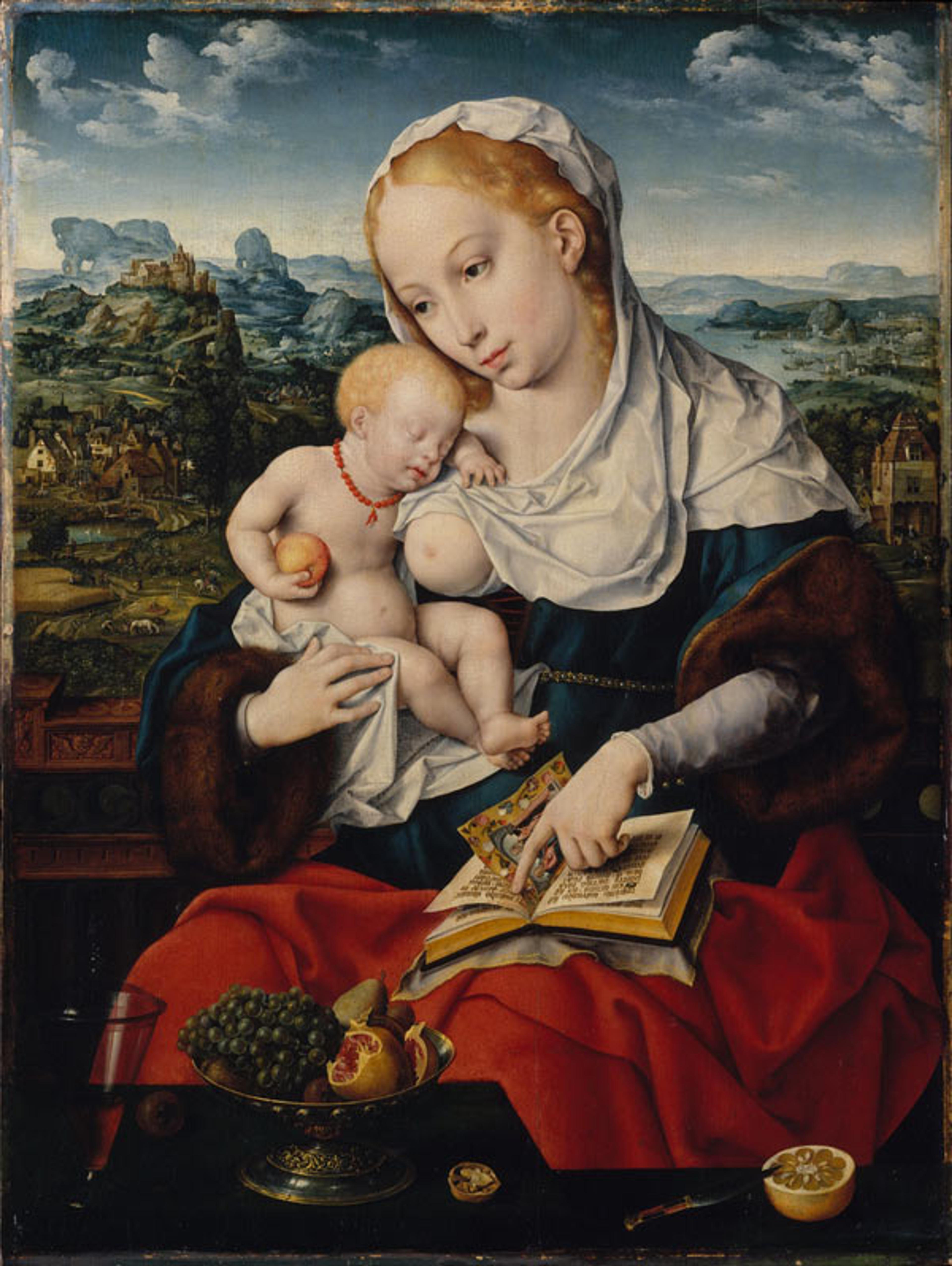
Bunches of hazelnuts attached to wooden picks, awaiting installation on the Main Hall arches. Photograph by Christina Alphonso
«Christmastide, the medieval celebration of Christmas, provides us with the opportunity to decorate The Cloisters with traditional materials to celebrate the season. As regular visitors and readers know, the decorative designs and elements are based on medieval evidence and are fabricated almost entirely from fresh seasonal materials. Among them is the familiar hazelnut.»
"Stories from the Understory," published on The Medieval Garden Enclosed (December 18, 2013), introduced the hazel tree, its ancient mythology, appearance in folklore, traditional symbolism, and practical uses. Hazelnuts (and nuts in general) were ancient symbols of good luck and fertility which were given new Christian meanings and remain a common part of Christmas traditions even today. Physically characterized by three distinct parts, nuts were interpreted as a sign of the Trinity. The outer husk is bitter, representing the flesh and Passion of Christ, the shell symbolizes strength of faith and the wood of the cross, while the sweet nut represents Christ's divine nature. Nuts are often represented in images of the Virgin and Child, as illustrated in this painting by Joos van Cleve, where a halved walnut rests on the ledge in the foreground.

Joos van Cleve (Netherlandish, ca. 1485–1540/41) and a collaborator. Virgin and Child, ca. 1525. Oil on wood. The Metropolitan Museum of Art, New York, The Jack and Belle Linsky Collection, 1982 (1982.60.47)
Hazelnuts are specifically mentioned in medieval texts, mystery plays, and poems. The fourteenth-century anchoress and mystic Julian of Norwich related a series of sixteen visions in her Revelations of Divine Love. Little is known of her life, except that she fell seriously ill in 1373 but recovered after receiving visions related to the Passion of Christ and the Virgin Mary. The first revelation concerned God's love for all things. When a small object she likens to a hazelnut is laid in her palm, she asks what it is and is told, "It is all that is made." A metaphor for the whole of creation, the nut symbolizes the infinite power of God, regardless of its insignificant size.
The hazelnut (or "cobill nut" as they were called in the fifteenth century) also appears in one of the mid-fourteenth-century mystery plays performed for the feast of Corpus Christi in York, designed to inspire the audience's direct involvement with salvation history. In the play The Offering of the Shepherds, the shepherds arrive at the site of the Nativity and lament the fact that they have only humble gifts for the baby Jesus. The second shepherd presents the infant with two hazelnuts, strung together as a bracelet:
Thou Sonne, that shall save bothe see and sande,
Se to me sen I have thee soght,
I am ovir poure to make presande
Als myn harte wolde, and I had ought.
Two cobill notis uppon a bande,
Loo, litill babe, what I have broght,
And whan ye sall be Lorde in lande,
Dose goode agayne, forgete me noght,
For I have herde declared
Of connyng clerkis and clene
That bountith askis rewarde,
Nowe watte ye what I mene.
The various metaphors and associations with Christ therefore make nuts an eminently suitable element in the holiday decorations at The Cloisters. Four huge arches are installed in the Main Hall, covered in boxwood and decorated with ivy, lady apples, rosehips, and hazelnuts. Although the arch forms and rosehips are reused from year to year, all of the other elements are fresh and must be replaced weekly. The hazelnuts can be reused for several years before the nuts become rancid. New hazelnut bundles were fabricated from twenty pounds of freshly harvested nuts from Oregon last year. A post later this month will feature the many steps involved in the preparation, fabrication, and installation of our decorations. We hope that you will have an opportunity to visit us during the holiday season; our halls will be decked from December 9 through January 6.
Sources
Grigson, Geoffrey. The Englishman's Flora. 1955. Reprint: London: J. M. Dent & Sons, 1987.
Impelluso, Lucia. Nature and Its Symbols. Los Angeles: J.P. Getty Museum, 2004.
Levi D'Ancona, Mirella. The Garden of the Renaissance: Botanical Symbolism in Italian Painting. Firenze: L. S. Olschki, 1977.